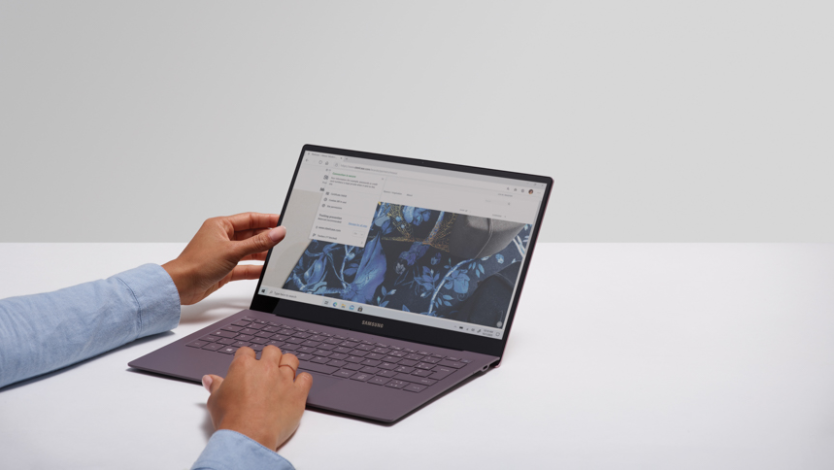
April 11, 2023
What are the most common threats to your online security?
Whenever you go online, you risk encountering a cybersecurity threat — but you are also being protected by the latest defensive software like in Microsoft Edge — one of the most secure browsers available today. Learn what else to do to defend yourself from attacks on your personal information, finances, and browsing history.
Types of cybersecurity threats
Cybersecurity threats are getting more frequent and sophisticated. Today’s bad actors are looking to break into your company’s files, steal your account passwords, track your movements, or hold your hard drive for ransom. Here are some of the most common ways they can achieve these goals — and the best ways you can prevent cybersecurity attacks from happening.
Phishing
This is known as a social engineering attack, and it’s among the most common you might encounter. Phishing can take many forms: spam emails or text messages asking you to inadvertently reveal sensitive information through fake websites, emails from supposedly authentic sources, and other types of trickery.
The most common phishing includes messages that look like the following:
- A website that asks you for your credit card information
- Your company’s IT department asking you to verify your account
- Download links for coupons, receipts, and services you don’t remember using
- Giveaways, contests, and sweepstakes
- Malicious attachments
By placing a veneer of authenticity or authority, phishing senders can gain your trust and convince you to enter compromising details or click malicious links and downloads.
Many email services nowadays offer phishing filters, but they don’t catch everything. It’s important to treat these messages with suspicion and notice any inconsistencies. Microsoft Defender, integrated into both Windows 11 and Microsoft Edge, can detect unsafe websites that might seem legitimate, thereby protecting you against both phishing and malware.
Password breaches and data leaks
Every year, companies lose millions of dollars from data breaches. Hackers will target major companies to reveal their database of saved user email addresses, passwords, and important data that can be related to finances and other important information, such as credit scores.
Saving passwords to your browser is a convenient feature, but it also comes with risks, such as if unauthorized users sign on. Today’s modern browsers will have password management integration as a security measure for when you’re logging into websites. Microsoft Edge features Password Monitor, which checks your saved passwords against data breaches and alerts you to change them in case your passwords are compromised.
Microsoft Edge also features a built-in password generator: because sometimes it’s difficult to create and remember a new password to match the character requirements.
Malware
Password breaches are also closely associated with malware: software that’s designed to infect your computer and prevent it from functioning as intended. Malware such as keyloggers, which record your passwords as you type them, are meant to steal your information.
More sophisticated malware can hijack your computer and grant remote access to hackers, exploit security vulnerabilities in your network, or use your computer as a platform to send spam messages or viruses.
Malware usually appears in the form of executable (.exe) files downloaded from an email or fake website. While antivirus software has existed for decades and has become integral to modern operating systems, downloading unknown files or browser extensions is still the number one way to infect your computer.
Ransomware
One of the most common forms of malware is ransomware, which extorts your computer or network files for money. There are two common types of ransomware:
- A malware program that locks down your hard drive files so they can’t be accessed or opened again until you pay a ransom
- A phishing email from a hacker who claims to know your browsing history or has secretly recorded you on your front-facing camera, and will forward embarrassing information to your email contacts unless you pay
Ransomware has taken off in the past two years, with over 70% of businesses facing ransomware attacks. Ransomware has disrupted major industries from healthcare to IT to the electrical grid, with real-world consequences for millions. But even on the individual level, ransomware can have major financial costs. Staying vigilant against phishing emails and potential malware is key to staying ahead of hackers. By doing so, you protect yourself as well as your employer.
Remote work threats
With the rise of remote work, many employees are accessing their company’s information from anywhere in the world. As a result, company networks have become widespread and decentralized. The rise of hybrid work raises the potential for cybersecurity risks for the following reasons:
- Employees using personal devices to access work files
- Unsecured public networks that are vulnerable to break-ins
- Communication and filesharing apps that could be prone to data breaches
- Physical theft of work devices
- Inadequate IT training against cybersecurity attacks
The most effective way to keep these risks in mind is to undergo your company’s cybersecurity training, which teaches how to recognize and avoid malware, phishing, and other network vulnerabilities. As risks keep growing year-over-year, more companies are making this training mandatory.
Knowing about these cybersecurity threats can help, you can protect what’s important both on- and offline. Try Microsoft Edge today and discover the benefits of a secure browser that protects you anytime you’re on the web.
- Features and functionality subject to change.
- Articles are written specifically for the United States market; features, functionality, and availability may vary by region.
Products featured in this article

Microsoft Edge
More articles

What is Chromium, and how does it enhance your browser?

How to manage and clear your cache and cookies

